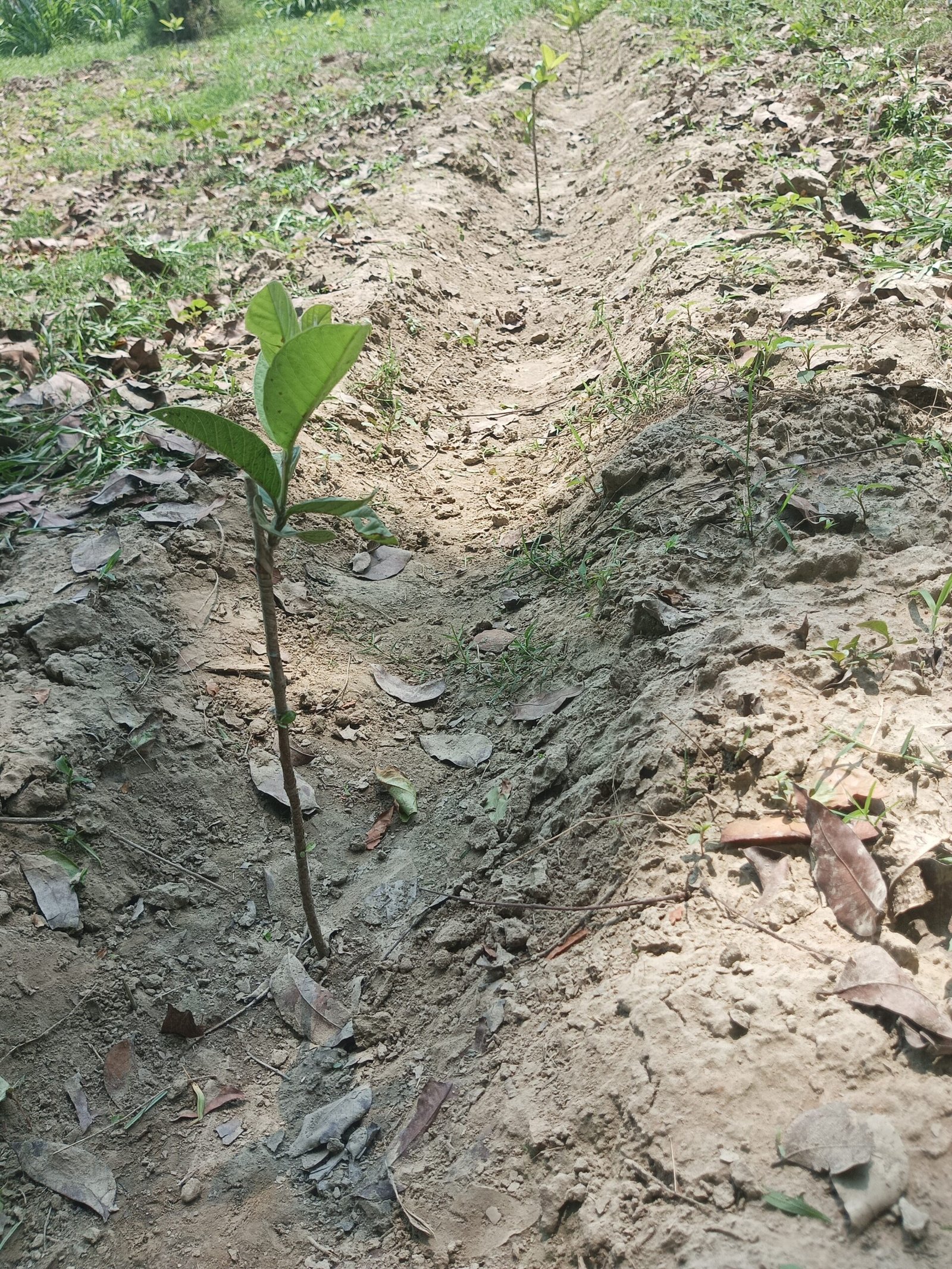Growing guava trees can be a rewarding experience. Here’s a basic guide to get you started:
1. *Choose a suitable location*: Guava plants prefer full sun and well-drained soil. Make sure the location you choose gets good sunlight every day.
2. *Prepare the Soil*: Guava grows in a variety of soil types but prefers slightly acidic soil over neutral soil. Ensure good drainage to prevent waterlogging, which can lead to root rot. Before planting the guava, dig a trench 4-5 inches deep and line the entire length.
3. *Planting*: small (16-18 inches) and grafted seedlings should be planted for quick fruiting from guava trees. Guava trees should be planted at a distance of 5 cubits in length and 4.5 cubits in width from one guava tree to another. Dig a hole twice as wide and deep as the root ball of the guava plant in a 4-5 inch trench. Place the plant in the hole, making sure the top of the root ball is level with the soil surface. Fill the hole with soil, firming it gently around the roots. 3-4 months after planting, the trench dug before planting should be leveled.
3-4 months after planting, the trench dug before planting should be leveled.
4. *Watering*: Newly planted guava trees should be watered by completely filling the trench dug at the time of planting. However, regular watering should not be given. Water should be given when the soil becomes dry and white after watering. If the soil is not properly drained, the plant does not get energy, and it cannot grow and may even die. After 3-4 months of planting, the entire land should be watered.
5. *Fertilization*: Apply organic fertilizers to the soil before planting guavas and fertilize guava plants every 1-2 months during the growing season with a balanced fertilizer. Once the plant is established, it should be fertilized 2-3 times a year. Avoid over-fertilizing, as this can cause excessive leaf growth at the expense of fruit production and may result in plant death.
6. *Pruning*: To maintain the shape of your guava tree, increase its branches and speed up flowering and fruiting, pruning is essential. Each guava branch usually has two leaves per tip. When there are 4 tips or eight leaves, keep only two tips or four leaves and trim the remaining upper leaves with a sharp tool.
After harvesting the fruit, pruning should be done every year by removing all the thin branches and leaving the thick branches.
7. *Pest and Disease Management*: Watch for common pests such as fruit flies, aphids and scale insects. Treat infestations immediately using organic or chemical insecticides. Although guava trees are generally resistant to many diseases, they can be vulnerable to root rot in poorly drained soils. Protect and grow guavas from insects by wrapping them in polythene bags, especially when they are young.
8. *harvesting*: Guava trees usually start flowering and fruiting within 2-3 months of planting. However, if the tree is not 8-10 months old, flowers and fruits cannot be kept on the tree. If the plant is small, the flowers should be removed. And when the tree is full, guavas should be kept on the tree. If the tree is not nourished, it is likely to die quickly if the fruit is taken from the tree. Pick the ripe fruit by gently twisting it off the tree. Guavas continue to ripen after being picked, so if you like firmer fruit, you can make them a little less ripe.
By following these steps, you can successfully plant and grow a guava tree in your garden or orchard. Happy gardening!
